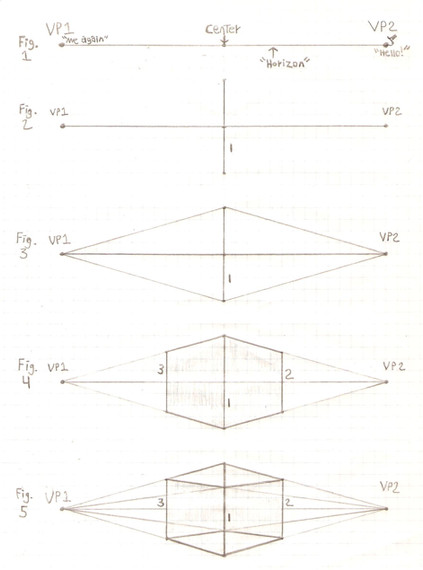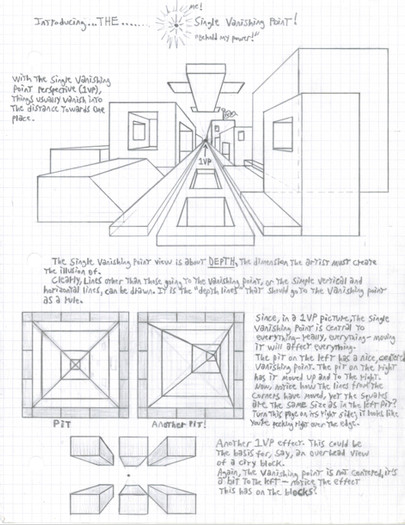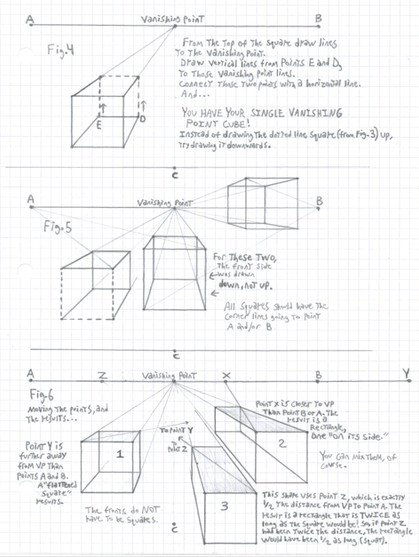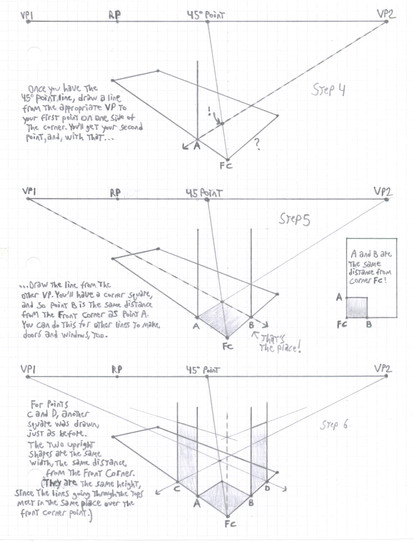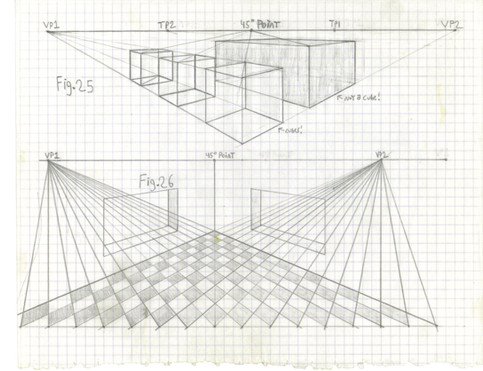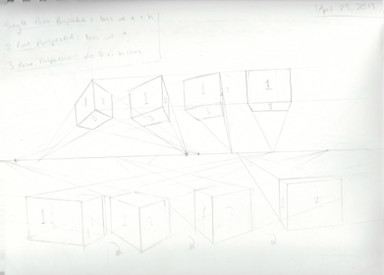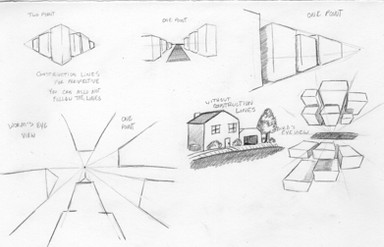HOME | DD
 GriswaldTerrastone — 2VP Cube Supplement: An Alternative Method
GriswaldTerrastone — 2VP Cube Supplement: An Alternative Method

Published: 2012-03-05 22:21:23 +0000 UTC; Views: 2441; Favourites: 30; Downloads: 101
Redirect to original
Description
When trying to find a way to draw a two vanishing point cube, the most common way is the "TP" method shown before. This is the method I've also found on the Internet. This is shown in Fig. 1.If there is a problem, it occurs when the 2VP square is close to the horizon. Drawing a line though the left or right corner of the square from the appropriate TP point can be a problem, since where the line ends up on the horizontal line can be off.
Is there a more direct way? Indeed there is!
This came about after figuring out how to draw a 3VP cube. The secret was that the sides of such a cube are 2VP squares themselves.
But if a 3VP cube has 2VP sides then...does a 2VP cube have 1VP sides?
If so, then can the method for drawing 1VP squares be used?
Turn a 2VP cube on its side. the top and bottom of that cube are simply two horizontal lines, with the sides coming from a single vanishing point!
So- where to put that point?
Here's how:
You start out the same way as before. You draw your horizon, you draw the junction, the vanishing points, the 45 degree point (always right in the middle), and you once again measure the distance from the vanishing points to the junction.
This time, though, you do not have to find the TP points if you do not want to. I did so here only as illustration.
What you do, as shown in Fig. 2, is simply draw points directly below the vanishing points the same distance as the TP points would have been from them on the horizon. In this case, it would be 10.2 cm.
Those points we can call "Point A" and "Point B."
You then draw your 2VP square, just as before.
This time, however, you draw a line from the front corner of the square- Point TC here- to either Point A or Point B.
In this case I drew it to Point B. Because, well, why not?
What you do then is drop a vertical line down from the right corner of the square (if Point A had been used you'd drop it from the left corner) until it touches the first line.
From VP2 you draw a line through that point until it is below the front corner of the square. Drop a vertical line from the front corner until it touches that line (Point BC). You now have the right side of the cube: a 1VP square.
To Point BC draw a line from VP1. Drop a vertical line from the left corner of the 2VP square.
You have your solid 2VP cube.
In this case I did include Points TP1 and TP2. I used TP1 as if I was going to draw the cube that way to show that the resulting line (from Point X to Point TC) is 5.2 cm.
Using the other method, the front corner line- from Points TC to BC- is also 5.2 cm.
They match. It works!
If you had wanted to draw the vertical lines of this cube UP instead of down, then Points A and B would have to be 10.2 cm ABOVE the vanishing points. There is no reason why they cannot be both below and above the vanishing points, if you want to draw more than one cube.
Now you have not one but two ways of drawing a 2VP cube! Since they both work, choose which one you prefer, and draw those 2VP cubes!
Next page:
[link]



